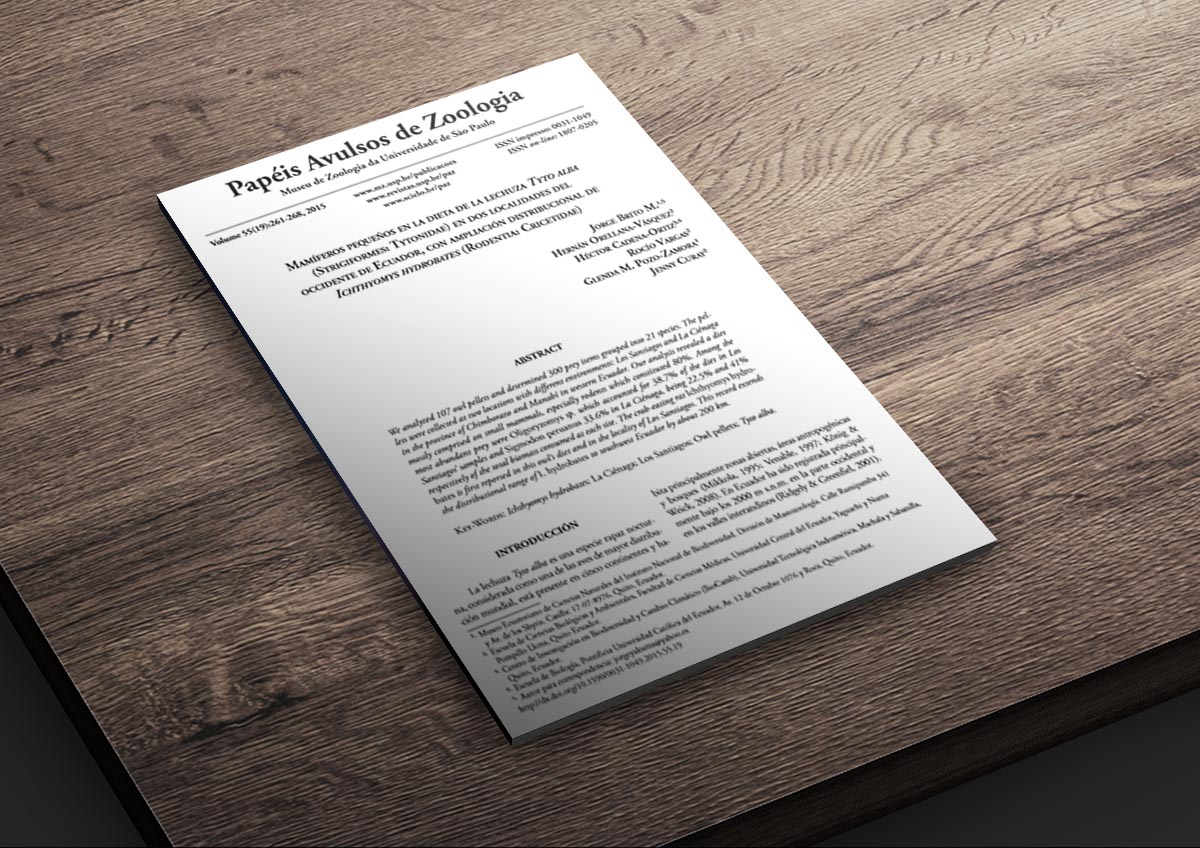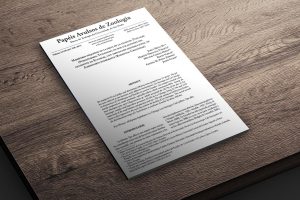Parallel body shape divergence in the Neotropical fish genus Rhoadsia (Teleostei: Characidae) along elevational gradients of the western slopes of the Ecuadorian Andes
| Título: | Parallel body shape divergence in the Neotropical fish genus Rhoadsia (Teleostei: Characidae) along elevational gradients of the western slopes of the Ecuadorian Andes. |
| Identificador de recurso: | https://journals.plos.org/plosone/ |
| Fecha: | 2017-06-28 |
| Autor: | Malato, Grace; Shervette, Virginia R.; Navarrete Amaya, Ronald; Valdiviezo Rivera, Jonathan; Nugra Salazar, Fredy; Calle Delgado, Paola; Karpan, Kirby C.; Aguirre, Windsor E. |
| Otros colaboradores: | |
| Editorial: | PLoS ONE |
| Derechos: |
| Descripción | Neotropical mountain streams are important contributors of biological diversity. Two species of the characid genus Rhoadsia differing for an ecologically important morphological trait, body depth, have been described from mountain streams of the western slopes of the Andes in Ecuador. Rhoadsia altipinna is a deeper-bodied species reported from low elevations in southwestern Ecuador and northern Peru, and Rhoadsia minor is a more streamlined species that was described from high elevations (>1200 m) in the Esmeraldas drainage in northwestern Ecuador. Little is known about these species and their validity as distinct species has been questioned. In this study, we examine how their body shape varies along replicated elevational gradients in different drainages of western Ecuador using geometric morphometrics and the fineness ratio. We also use sequences of the mitochondrial cytochrome oxidase c I gene and the second intron of the S7 nuclear gene to examine whether genetic data are consistent with the existence of two species. We found that body depth varies continuously among populations within drainages as a function of elevation, and that body shape overlaps among drainages, such that low elevation populations of R. minor in the Esmeraldas drainage have similar body depths to higher elevation R. altipinna in southern drainages. Although a common general trend of declining body depth with elevation is clear, the pattern and magnitude of body shape divergence differed among drainages. Sequencing of mitochondrial and nuclear genes failed to meet strict criteria for the recognition of two species (e.g., reciprocal monophyly and deep genetic structure). However, there was a large component of genetic variation for the COI gene that segregated among drainages, indicating significant genetic divergence associated with geographic isolation. Continued research on Rhoadsia in western Ecuador may yield significant insight into adaptation and speciation in Neotropical mountain streams. |
| Claves | |
| Relación | |
| Cobertura | EC |
| Idioma | en |
| Volumen | 12 (6) |
| Formato | |
| Tipo de recurso | texto |
| Fuente | https://doi.org/10.1371/journal.pone.0179432 |
| Nombre de archivo | 2017-06-28-gracemalato |



